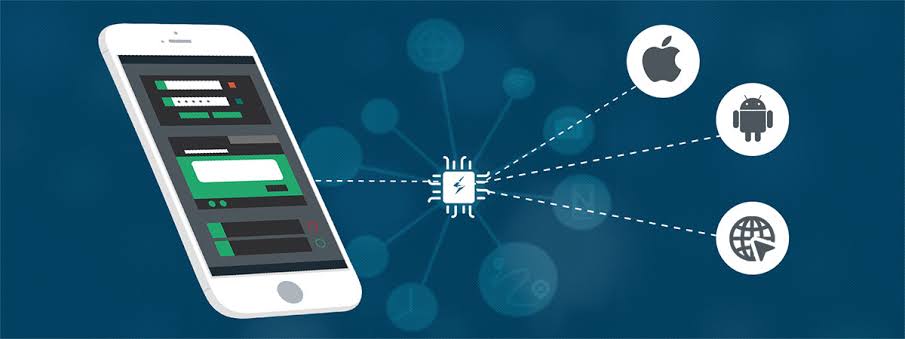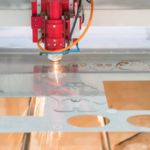In this evolving landscape of mobile app testing, ensuring a smooth and consistent user experience is of prime importance for the success of any software product. Mobile app quality assurance plays a crucial role in automation testing. The need for comprehensive testing on actual devices becomes increasingly evident as users interact with applications across an extensive array of devices and operating systems.
This article scrabbles with the significance of real device testing in mobile app quality assurance, exploring its unique advantages to empower developers and QA professionals in delivering apps that not only meet but exceed user expectations.
Table of Contents
Reasons Why Real Device Testing Is Important For Mobile App Quality Assurance
While emulators and simulators are valuable in the testing process, they may not fully replicate the real-world conditions and user experiences that actual devices can provide. Hence here is the list of some key reasons why real device testing is important for mobile app quality assurance:
Hardware And Software Diversity
Real device testing is very important due to the inherent diversity in the hardware and software landscape of mobile devices. Mobile phones and tablets vary significantly in their makes, models, and configurations. It introduces a multitude of factors that can impact an application’s performance.
Testing on a diverse array of devices is essential to ensure that the app functions seamlessly across the spectrum of screen sizes, resolutions, processors, and memory capacities that users may have.
Different devices often come equipped with unique features, such as fingerprint sensors, accelerometers, or specialized cameras. Real device testing becomes crucial in this context. It allows developers to validate that their application effectively supports these features. Verifying the correct utilization of hardware-specific functionalities is vital for ensuring a consistent and optimal user experience across various devices.
For example, a mobile app designed to use a fingerprint sensor for authentication must undergo real device testing to confirm that this feature works as intended on different devices with varying fingerprint sensor technologies. Similarly, applications relying on accelerometers or specialized cameras need to be thoroughly tested on real devices to guarantee proper functionality and performance.
With real device testing, developers can identify and correct the discrepancies if any in the way their application interacts with the diverse range of hardware components present in the mobile ecosystem. This proactive approach helps in delivering a robust and reliable app. Also, it ensures that users across different devices can fully benefit from the unique features their devices offer.
Operating System Versions
The diverse landscape of mobile operating systems, predominantly iOS and Android, is marked by frequent updates and version releases. These updates introduce changes in the operating environment, ranging from user interface enhancements to underlying system optimizations. Real device testing is a critical aspect of mobile app quality assurance as it addresses the imperative of ensuring compatibility with the latest OS versions.
With each new iteration of an operating system, mobile app developers face the challenge of adapting their applications to evolving technical specifications and user experience paradigms. Real device testing is essential to validate that an app remains functional and also capitalizes on any new features or improvements introduced in the updated OS versions.
By testing on actual devices, the developers can ensure that their apps seamlessly integrate with the latest OS capabilities. It offers users an up-to-date and optimized experience.
LambdaTest, a leading real device testing platform, enables developers to test their mobile applications on a wide range of real devices with different operating system versions. By leveraging LambdaTest, developers can simulate real-world scenarios, ensuring that their app performs reliably across the diverse OS versions prevalent in the mobile ecosystem.
LambdaTest also facilitates parallel testing on multiple devices, allowing developers to expedite the testing process and cover a broader spectrum of OS versions simultaneously. Its cloud-based infrastructure provides access to a vast array of real devices, reducing the need for extensive physical device setups. This not only enhances testing efficiency but also enables developers to identify and address compatibility issues early in the development lifecycle.
Network Conditions
Testing on actual devices allows developers to evaluate how their applications respond to the diverse challenges posed by various network environments. In this digital era, users can access apps through a variety of networks, including 3G, 4G, and Wi-Fi. Real device testing plays a crucial role in assessing and enhancing the performance of mobile applications under different network conditions.
The key aspects of network testing involve:
● Assessing Network Latency: It refers to the delay in data transmission between a user’s device and the application server. Real device testing allows developers to simulate scenarios with different levels of latency. It helps the developers to identify potential bottlenecks and areas for improvement in the app’s responsiveness.
● Connectivity Issues: It involves dropped connections or irregular network access. It significantly impacts the user experience. Real device testing enables developers to replicate these scenarios and ensure that the application gracefully handles situations where network connectivity is less than optimal. Identifying and addressing such issues is vital for preventing app crashes or data loss under real-world usage conditions.
● Variations In Data Transfer: speeds across different network types can affect the loading times of app content. Real device testing allows developers to measure the app’s performance under different speeds, optimizing it to deliver a seamless experience regardless of the user’s network connection.
Performance Testing
A key parameter in performance testing is memory usage. Mobile devices have finite memory resources. Real device testing allows developers to monitor and analyze how an app utilizes memory under various scenarios. It helps to identify potential memory leaks or excessive resource consumption, which leads to crashes or sluggish performance. By addressing these issues, the developers can enhance the overall stability of the application.
CPU utilization is a crucial aspect of performance testing on real devices. It involves assessing how much processing power the app requires to execute tasks efficiently. Real device testing helps to identify instances where the app may strain the device’s CPU, leading to slow responsiveness or increased battery drain. Optimizing CPU utilization ensures that the app runs smoothly across different devices and doesn’t unduly burden the hardware.
Battery consumption is a critical concern for mobile users. In real device testing it is instrumental in evaluating how an app impacts the device’s battery life. Through testing on actual devices, developers can measure the app’s energy efficiency and identify any features or processes that may be excessively draining the battery. To address these issues it is crucial to create a positive user experience and ensure that the app doesn’t deplete the device’s battery at an unsustainable rate.
User Experience (UX) Testing
Real device testing is essential for evaluating and enhancing the user experience (UX) of mobile applications to offer irreplaceable insights into various aspects such as touch gestures, responsiveness, and the fluidity of animations. Testing on actual devices provides a realistic environment for assessing how users interact with an application.
An essential aspect of UX testing on real devices involves:
● Evaluating Touch Gestures: Mobile devices rely heavily on touch inputs like tapping, swiping, pinching, and other gestures. Real device testing allows developers to validate that these touch interactions are accurately interpreted by the application. Detecting and addressing issues related to touch sensitivity or gesture recognition is vital for preventing user frustration and ensuring the app’s ease of use.
● Responsiveness: It involves assessing how quickly the app responds to user inputs and commands. By testing on actual devices, developers can identify any delays or lags in responsiveness that may affect the overall usability of the application.
● Fluidity Of Animations: It is an integral part of modern mobile app design. Real device testing allows developers to refine these aspects, ensuring that animations enhance rather than detract from the overall user experience.
Security Testing
Mobile applications often handle sensitive user data, and encryption is a crucial safeguard against unauthorized access. Testing on real devices allows developers to verify that encryption protocols are effectively implemented and that sensitive data remains protected from potential security threats.
Real device testing enables developers to evaluate the integrity of secure communication protocols, identify vulnerabilities, and confirm that data is transmitted in an encrypted and tamper-resistant manner. As mobile apps frequently communicate with servers to exchange information, it is necessary to ensure that this data transfer will occur securely.
Handling sensitive information involves user credentials or financial data. It requires rigorous testing to prevent security breaches. Real-device testing allows developers to simulate real-world scenarios where sensitive information is processed and stored. The developers can identify and rectify potential vulnerabilities, ensuring that user data remains confidential and protected.
Additionally, real device testing smoothens the assessment of other security features, such as access controls, authentication mechanisms, and the secure storage of credentials. Testing in a real device environment helps to identify any weaknesses or loopholes that might compromise the overall security of the application.
Geographical Considerations
Geographical factors play a significant role in determining network conditions, such as data speed, data latency, and connectivity. Real device testing allows developers to evaluate the performance of their apps under the network conditions prevalent in different regions. By testing on devices used in specific geographic locations, developers gain insights into how the app functions in real-world scenarios.
The user preferences and behaviors can vary across different regions. Real device testing provides an opportunity for the developers to understand and adapt to these regional conditions which allows developers to tailor the app’s user interface, content, and functionality to better align with the expectations and preferences of users in specific geographic areas.
Real device testing enables developers to identify and address considerations such as language preferences, and cultural differences, which contributes to a more inclusive and user-friendly application.
Regression Testing
Regression testing involves verifying that the existing features still perform as expected and that user interactions across different devices remain flawless. Real device testing allows developers to systematically test the entire application on a variety of devices to detect any regression issues that may arise due to the introduced changes or updates of devices.
Also, real device testing facilitates the identification of compatibility issues with various operating system versions, screen sizes, and other device-specific factors. This is crucial for maintaining a consistent user experience across a broad spectrum of devices and configurations, especially when new features or updates may have different implications on different devices.
Users interact with mobile applications on a diverse range of devices, each with unique specifications and configurations. Testing on real devices helps identify any device-specific issues and ensures a more accurate representation of how the application behaves in the hands of end-users.
Conclusion
Real device testing is very important in the realm of mobile app quality assurance. As the digital landscape continues to evolve, user expectations rise, and competition is intensifying to ensure the flawless performance of mobile applications across diverse devices.
Real device testing empowers developers to detect nuanced issues, optimize user experiences, and ultimately deliver a polished and reliable product to the people. By prioritizing the key components of quality assurance, developers can navigate the intricacies of the mobile ecosystem with confidence and ensure that their apps meet user expectations in an ever-evolving mobile landscape.











